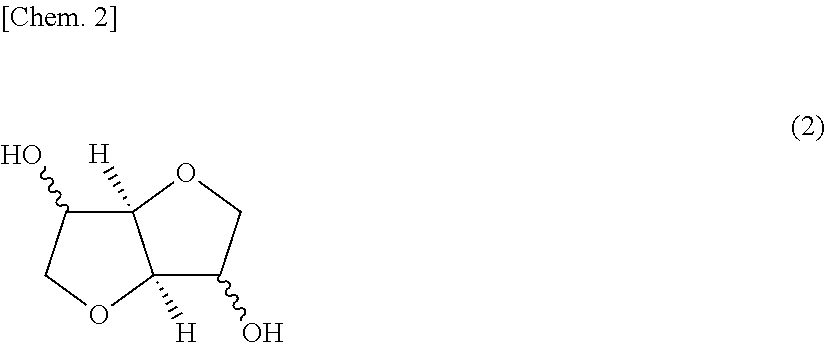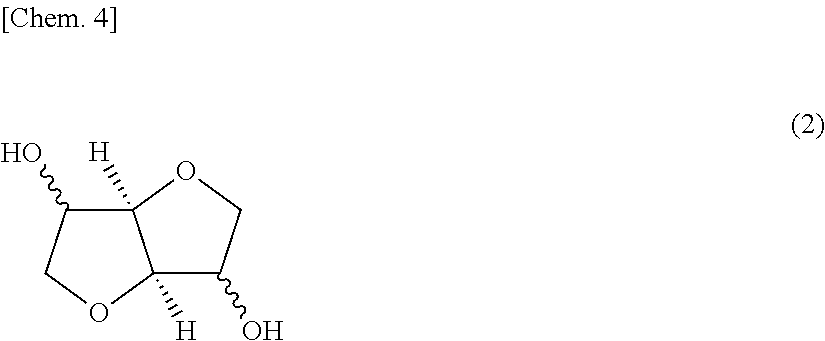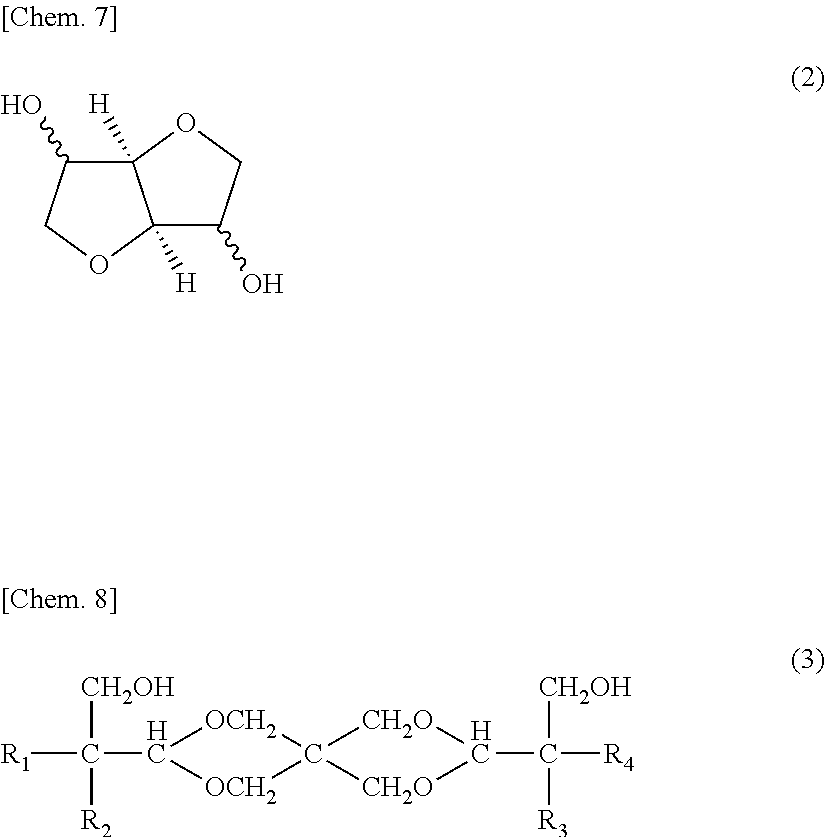Polycarbonate resin compositions, and molded articles, films, plates, and injection-molded articles obtained therefrom
- Summary
- Abstract
- Description
- Claims
- Application Information
AI Technical Summary
Benefits of technology
Problems solved by technology
Method used
Image
Examples
examples
[0342]The first aspect of the invention will be explained below in more detail by reference to Examples. However, the first aspect of the invention should not be construed as being limited by the following Examples unless the first aspect departs from the essential points thereof.
[0343]In the following, properties of the polycarbonate resin compositions and molded articles were evaluated by the following methods.
(1) Method for Test Piece Production
[0344]Pellets of a polycarbonate resin composition were dried at 80° C. for 6 hours using a hot-air drying oven. Subsequently, the dried polycarbonate resin composition pellets were fed to an injection molding machine (Type J75EII, manufactured by The Japan Steel Works, Ltd.) to mold injection-molded plates (60 mm (width)×60 mm (length)×3 mm (thickness)) and ISO test pieces for mechanical property evaluation under the conditions of a resin temperature of 240° C., mold temperature of 60° C., and molding cycle of 40 seconds.
(2) Measurement o...
example a1
[0360]Into a polymerization reactor equipped with a stirrer and a reflux condenser regulated so as to have a temperature of 100° C. were introduced ISB, CHDM, DPC which had been purified by distillation to a chloride ion concentration of 10 ppb or less, and calcium acetate monohydrate so that the ISB / CHDM / DPC / calcium acetate monohydrate molar ratio was 0.50 / 0.50 / 1.00 / 1.3×10−6. Nitrogen displacement was sufficiently conducted (oxygen concentration, 0.0005-0.001 vol %).
[0361]Subsequently, the contents were heated with a heat medium, and stirring was initiated at the time when the internal temperature reached 100° C. While regulating the system so as to maintain the internal temperature of 100° C., the contents were melted and homogenized. Thereafter, heating was initiated to elevate the internal temperature to 210° C. over 40 minutes. At the time when the internal temperature reached 210° C., the system was regulated so as to maintain the temperature and, simultaneously therewith, pre...
example a2
[0365]The same procedure as in Example A1 was conducted, except that Paraloid EXL 2603 was added as an impact strength modifier in an amount of 5 parts by weight.
PUM
| Property | Measurement | Unit |
|---|---|---|
| Temperature | aaaaa | aaaaa |
| Fraction | aaaaa | aaaaa |
| Fraction | aaaaa | aaaaa |
Abstract
Description
Claims
Application Information
 Login to View More
Login to View More - R&D
- Intellectual Property
- Life Sciences
- Materials
- Tech Scout
- Unparalleled Data Quality
- Higher Quality Content
- 60% Fewer Hallucinations
Browse by: Latest US Patents, China's latest patents, Technical Efficacy Thesaurus, Application Domain, Technology Topic, Popular Technical Reports.
© 2025 PatSnap. All rights reserved.Legal|Privacy policy|Modern Slavery Act Transparency Statement|Sitemap|About US| Contact US: help@patsnap.com



